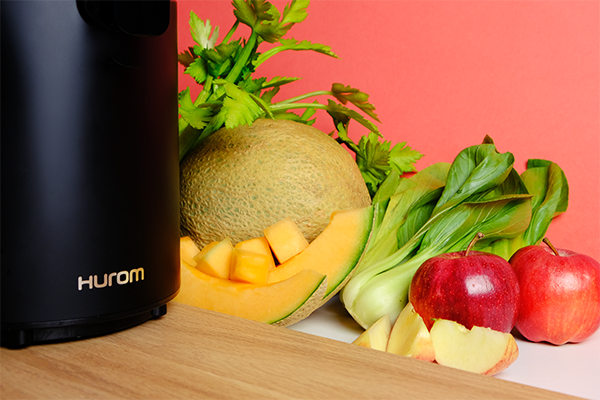
What They Never Told You About Cantaloupes
Share

They are round, nutritious, and succulence renowned. Melons can be found in almost every corner of the world. To date, there are over 38 known types. This article will cover a local favourite (and we are not talking about watermelons or bitter gourds; that’s right, the latter is a type of melon!).
In case the title hasn’t clued you in, we are talking about cantaloupes (or rockmelons for our Aussie and Kiwi friends). Occasionally found in salads and frequently at fruit stalls in your favourite hawker centre, cantaloupes are the perfect fruit for those craving something sweet, healthy, and deliciously juicy. However, could eating too much actually kill you? What do cantaloupes and bananas have in common? Where do these fruits even come from?
Here are some cantaloupe facts with answers to these questions and more (with added recipes below)!:
Pope’s Cantaloupe

It is rumoured that the cantaloupe derives its name from from an Italian town called Cantalupo di Sabina. It is alleged that cantaloupes originated from there (more on this later). The word “cantalupo” actually translates to “singing wolf”. The town’s namesake derives from the presence of wolves in the area. More interestingly, the old papacy of Rome had an estate there and it was rumoured that Pope John II’s heart attack was induced from eating too much cantaloupes!
Actual Origins

While it got its name from the Italian town, its actual origins are still unknown. As one of the oldest cultivated fruits, cantaloupes have found themselves in recipe books and drawings from Ancient Egypt, Rome, and the Levant. Thank goodness taste in food doesn’t change as much as taste in fashion or else we won’t have these amazing fruits cultivated the way they are today.
Nutritional Facts

Cantaloupes are nearly 90% water! Despite that, they are packed with nutrients and are very low in calories (for every 100 gram of cantaloupe, you get about 34 calories). Loaded with vitamins C, A, B (B1, B3, and B6), and K, potassium, copper, and magnesium, this is certainly a ball of goodness. Some health benefits include: prevention of heart attacks, improved eyesight, weight loss, better skin health, healthier lungs, and boosted immune system amongst others. It is a wonder that cantaloupes aren’t a superfruit. At the very least, they are super tasty.
The King of Melons

What’s the most you have paid for fruits? If it is more that 20,000 USD, you can find yourself the proud of owner of the Yubari King Melon. As the name implies, this is certainly the King of Melons. Hailing from Japan, the Yubari King enjoys this status due to Japan’s luxury fruits market (on top of scarce farming land and Japan’s gift giving culture). It is renowned for its uniquely sweet flavour and perfectly round and smooth rind.
Before we get to the recipes, here’s another sweet fact (too short to make the list but interesting nonetheless): bananas and melons are technically related as they are both berries from a botanical perspective.
Unlike bananas, it is advised to give melons a good wash over the rinds before cutting into them as the surface may harbour different types of bacteria.
Here are some juicing recipes for you to try out:
Apple Melon

Ingredients:
- Melon 200g
- Apple 130g
- Bok Choy 50g
- Celery 50g
Instructions:
- Using a peeler, peel melon’s rind. Cut flesh into appropriate sizes.
- Wash celery and bok choy thoroughly, and remove seeds from apple. Cut.
- Place lever on “close” and extract while alternating input of ingredients.
- When the last of the celery is inserted, place lever on “half-open” and allow pulp to be expelled.
Cantaloupe Juice With Ginger And Lemon

Ingredients:
- Rockmelon 200g
- Ginger (2 inches)
- Lemon 200g
Instructions:
- Using a peeler, peel melon’s rind. Cut flesh into appropriate sizes.
- Wash ginger thoroughly.
- Peel lemon and cut into appropriate sizes.
- Place lever on “close” and extract while alternating input of ingredients.
Cucumber Mint Melon Juice

Ingredients:
- Cucumber 100g
- Rockmelon 200g
- Spinach 130g
- Mint Leaf (1/4 cup leaves)
Instructions:
- Using a peeler, peel melon’s rind. Cut flesh into appropriate sizes.
- Cut off the ends of the cucumber, remove the prickles, and slice.
- Wash the spinach and mint leaves thoroughly.
- Place lever on “close” and extract while alternating input of ingredients.
Cucumber Melon Juice

Ingredients:
- Cucumber 200g
- Melon 200g
- Celery 150g
Instructions:
- Using a peeler, peel melon’s rind. Cut flesh into appropriate sizes.
- Cut off the ends of the cucumber, remove the prickles, and slice.
- Wash celery thoroughly.
- Place lever on “close” and extract while alternating input of ingredients.
---
Need some ideas for juice recipes? Check out our Hurom recipes here: https://huromsingapore.com/pages/juice-recipes-health
